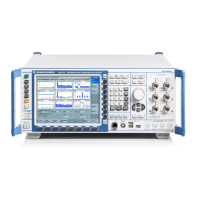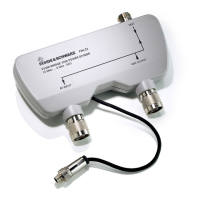Command Reference
R&S
®
CMW500
193User Manual 1173.9463.02 ─ 02
7 Command Reference
This chapter lists all commands for the R&S CMW500 platform.
Contents of this chapter
The commands listed in this chapter control the R&S CMW500 platform. Application-
specific commands (e.g. GPRF commands) are listed in the relevant sections.
● Common Commands............................................................................................193
● Emulation Codes...................................................................................................195
● Instrument-Control Commands.............................................................................196
7.1 Common Commands
Common commands are described in the IEEE 488.2 (IEC 625-2) standard. These com-
mands have the same effect on different devices. The headers of these commands con-
sist of "*" followed by three letters. Many common commands are related to the status
reporting system.
Some of the commands in the following list are R&S CMW500-specific but use the same
syntax as common commands. They are marked "not IEEE 488.2-confirmed".
For commands related to macros see chapter 7.3.1, "Macro Commands", on page 196.
Command Parameters/
Remarks
Short Description
*CLS – CLear Sta-
tus
–
no query
Sets the status byte (STB), the standard event register (ESR) and
the EVENt part of the QUEStionable and the OPERation register
to zero. The command does not alter the mask and transition
parts of the registers. It clears the output buffer.
To perform this command for all sub-instruments use *GCLS
instead.
*DEV? – DEVice –
query only
Queries the R&S CMW500 device number. The device number
is shown in the Remote Settings section of the setup dialog as
"Assigned Instrument".
*ESE – Event Sta-
tus Enable
0...255 Sets the event status enable register to the value indicated. The
query *ESE? returns the contents of the event status enable reg-
ister in decimal form.
Alternatively *XESE can be used with a comma separated list of
mnemonics enclosed in brackets. Mapping for bit 7 to 0:
PON,URQ,CME,EXE,DDE,QYE,RQC,OPC. Example: *XESE
(QYE,OPC) sets bit 2 and 0 (Query Error and Operation Com-
plete).
*ESR? – Event Sta-
tus Read
–
query only
Returns the contents of the event status register in decimal form
(0 to 255) and subsequently sets the register to zero.
Alternatively *XESR? can be used to return the result as comma
separated list of mnemonics enclosed in brackets. For values see
*XESE.
Common Commands

